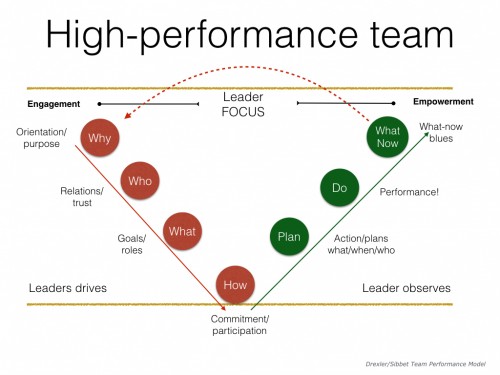Driving home, Peter kept on asking himself this question.
What a disaster! This was an important day. He had put together a cross functional team of ‘experts’; supposedly some of the most competent people in the company. He had taken great pain (and expense) in organising the best possible location offsite. There, he had given them a very clear brief, explaining exactly what needed to be done and what he expected from them. The deadline was 4pm – tight but doable.
And the result?
…. was a monumental f… up to put it mildly.
What was wrong with these people?
There was nothing wrong with these people. What was wrong was that Peter was not managing the states and states of the team in a skilful way. He was ignoring or maybe totally unaware of the basic mechanics of human interaction.
In my previous blog posts, I have explain this concept of states and stages in more details, you may want to read this first.
The four fundamental questions
Once we understand that this ‘instability of organic systems’ is what is going on, we need a basic tool or more accurately, to understand and master the basic process that is needed in order for groups of human beings to collaborate effectively with each other. From behavioural psychology, we learn that whenever humans are put in a new situation, a new project or a new workgroup or maybe just a new workday, they ask themselves 4 fundamental questions:
- Why are we doing this?
- Who am I going to do it with?
- What are we going to do?
- How are we going to do it?
And they ask them in exactly that sequence because they need the answers in that sequence. The questions help us make meaning of what we are doing. If it is not meaningful to us, we don’t get much done. It is as simple as that.
The first question is quite subconscious, a sensing. The second question is more of a feeling and the last two questions are more thinking questions. But it is hard for us to move meaningfully forward to the next question if the previous question has not been answered clearly for us.
From process theory, we know that processes follow an oscillating pattern. They move in regular ‘Waves’ from one extreme point to its opposite and then back again. Human group processes the two extremes, which are often insecurity/uncertainty to security/certain.
The High-performance team model
When we combine these two, we get the Drexler/Sibet high performance model and it looks like this:
Why are we doing this?
The first step is all about orientation. Establish a clear purpose and meaning with whatever it is we are about to do.
Next
Who is on this team and do they know each other or not?
If not, we need to find a way to break the ice and let people get to know each other. We are wired in our brains to be slightly distrustful of people we do not know. It is a basic survival precaution that dates back to our cave origins. If we are going to collaborate on a job/project, we need a minimum of trust. We start to build trust as we get to know each other. It is very simple.
If we know each other on the team, we need to check in. Just a quick round. How are we all feeling in general and what are maybe our expectations for this job or venture or day? This is all about, what Blanchard (Situational Leadership) would call, our psychological readiness level.
What are the goals and roles?
Then we need to agree on the goals and roles. What are we trying to achieve and what roles do we each have that will contribute to us achieving this?
How are we going to approach this?
And finally, we need to have a discussion and establish agreement, so how are we going to approach this?
Once we have been through these first four fundamental steps, we arrive at the bottom of the V model a point where we all have clarity and certainty about what we are about to embark on.
As the leader, you have now done 90% of your work. You have set direction, alignment and commitment. Lean back and let them decide the details of (tasks and timeframes, etc.) how they are going to do it. That will be quite easy if we have done the ground work well.
Observe and offer guidance only if needed as they execute, and only when they are done do you step back in and facilitate a reflection, so how did it go? What did we learn and what would we do different next time? You can see my previous post on goal grids and learning for more on this.
In my next online training, the Team leaders’ Toolbox, I will go into much more detail on how to actually do this in practical terms. Because it is not rocket science, it just requires you to be aware of some basic principles about human behaviour and the importance of relationships.
 Enter your email address below and we will notify you when we launch the Team Leader’s Toolbox!
Enter your email address below and we will notify you when we launch the Team Leader’s Toolbox!
___________________________________________________
This post is one of a series where we are exploring the notion of leadership and how this is different from management. Our starting point is the Service Profit Chain and the understating that the management part of our job will only take us so far. If we really want to create an organisation that is capable of delivering outstanding customer experiences, we need to develop an organisation that delivers outstanding employee experiences – and that requires leadership. You can check out other articles of the series below:
- Are you an inspiring leader to work for?
- What does it require to be an inspirational leader?
- The something for something system is at the heart of the uninspiring workplace.
- How is team management different from team leadership and why should I worry?
- Teams are organic systems, and therefore, by definition unstable.
- How you can help you team manage their states
- Do you understand the stages that your team goes through?
